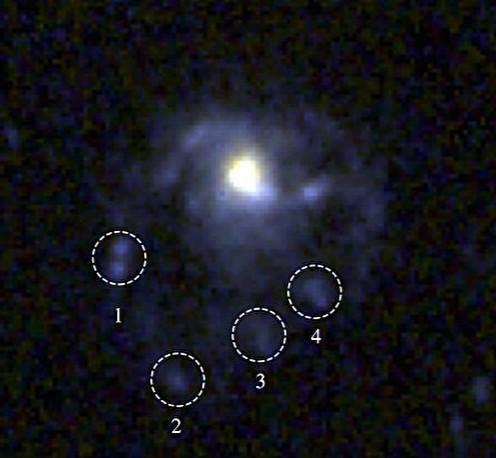
New Tentacled ‘Jellyfish’ Galaxy Discovered, Visual Emerges
In a groundbreaking discovery, astronomers have identified a new galaxy that bears an uncanny resemblance to a jellyfish. Dubbed a “tentacled jellyfish galaxy,” this celestial wonder is estimated to be approximately 12 billion light-years away from Earth. The astonishing find was made possible through the powerful capabilities of the James Webb Space Telescope.
As revealed in a recent study published on arXiv, the galaxy in question is a type of cosmic entity known as a jellyfish galaxy. These peculiar galaxies are characterized by their unique morphology, featuring tendrils of star-forming material that stretch out from their central regions like tentacles. This phenomenon is thought to occur when galaxies collide and merge with one another, resulting in the formation of these majestic, starry appendages.
The newly discovered galaxy, which has been assigned the identifier GN-z11, is a remarkable example of this phenomenon. According to the research, GN-z11 is a massive galaxy that is actively forming new stars, with its tentacles extending across vast distances. The galaxy’s central region is thought to be the result of a merger between two smaller galaxies, which has led to the formation of this striking, jellyfish-like structure.
“This is an extraordinary discovery, as it provides us with a unique opportunity to study the formation and evolution of galaxies in the early universe,” said Dr. Pascal Oesch, a co-author of the study and an astronomer at Yale University. “The James Webb Space Telescope has given us a glimpse into the distant past, allowing us to explore the mysteries of the cosmos in unprecedented detail.”
The discovery of GN-z11 was made possible through a combination of observations from the James Webb Space Telescope and the Hubble Space Telescope. By analyzing the light emanating from the galaxy, astronomers were able to determine its distance from Earth and its composition. The research team used a technique known as spectroscopy to break down the light into its component colors, allowing them to identify the presence of various elements and molecules.
The findings of the study have significant implications for our understanding of the early universe. Jellyfish galaxies are thought to be relatively rare in the present day, but they are believed to have been more common in the distant past. The discovery of GN-z11 provides evidence that these galaxies played a crucial role in the formation of stars and galaxies during the early stages of the universe’s evolution.
The James Webb Space Telescope is a powerful tool that has revolutionized our understanding of the universe. Launched in 2021, the telescope is designed to observe the cosmos in infrared light, allowing it to peer through dust and gas to reveal hidden objects and phenomena. Its advanced instruments and sophisticated technology have enabled astronomers to make a range of groundbreaking discoveries, from the detection of water vapor on distant exoplanets to the study of the formation of the first stars and galaxies.
The discovery of GN-z11 is a testament to the capabilities of the James Webb Space Telescope and the importance of continued investment in space exploration. As we continue to explore the universe and uncover its secrets, we are reminded of the awe-inspiring beauty and complexity of the cosmos.
Source:






